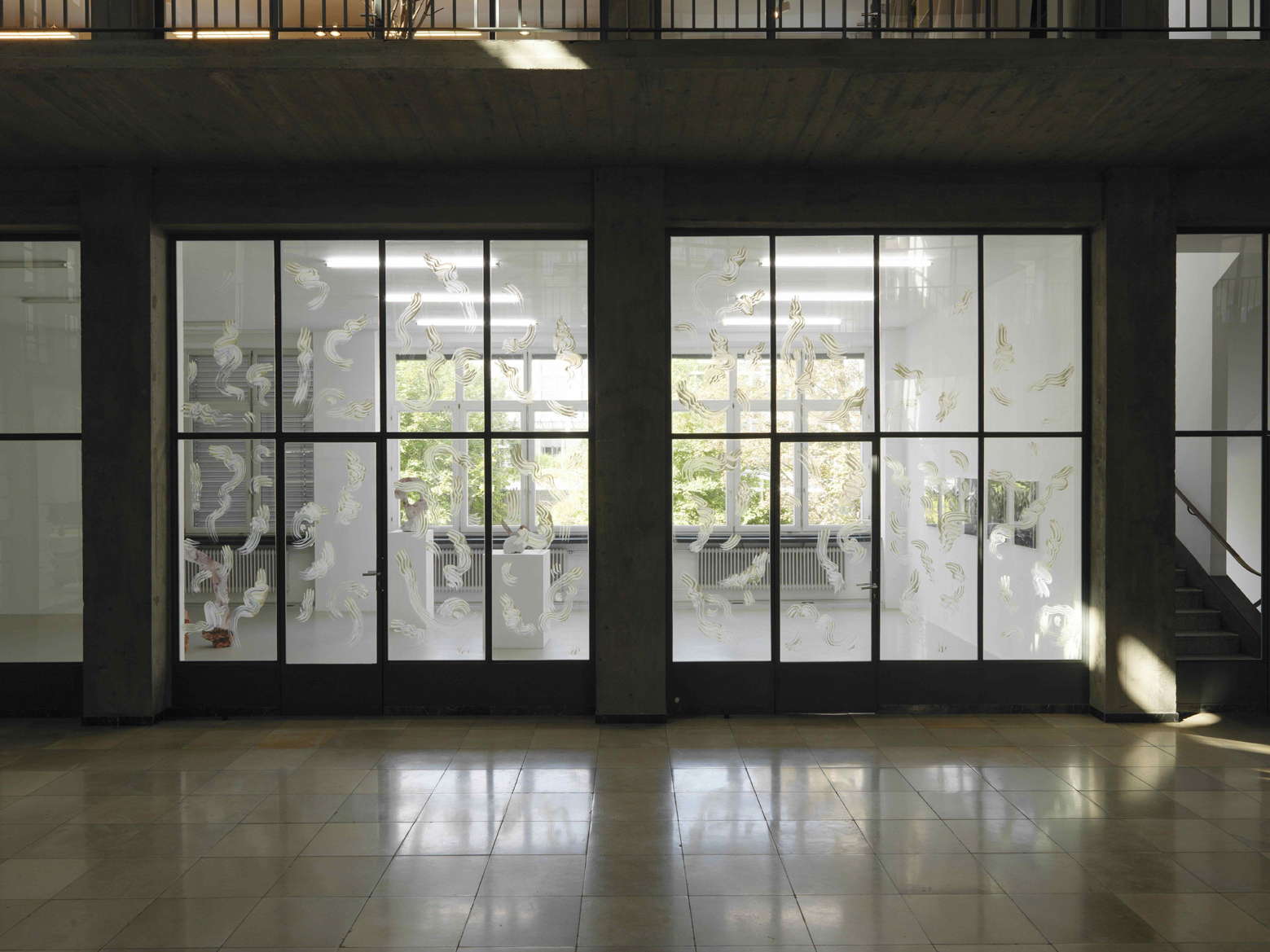The exhibition Gestures of Tomorrow at the Kunstverein Nürnberg, curated by Judith Grobe, brings together five artists who trace the effects and counter-effects of the human body on its surroundings. Although the exhibition focuses on technology and a temporal figure of tomorrow, beyond, or future, the context of our time in which ecology and the role of human beings in a so-called “anthropocene” are becoming ever more urgent, the future becomes fused with a primordial and historical trace. We have entered a geological and biological era in which the impact of human beings creates a scientifically non-negligible impact on the planet’s biosphere and chemical composition. The pivotal position of the identity and responsibility of the human extends out of socially-constructed ecosystems and into a reciprocal balance between nature, technology, and co-habitation.
The skin is our largest organ. It is a porous boundary, a layer, a connection to the world outside – both natural and man-made. The concept of contact and the causality of forces relate to contact between objects and their respective skins. Thinking about technology, user interfaces, social interactions, and ideas of making (the symbiotic design of contact-systems with our environment) develops our worldview and our psyche. In the exhibition Gestures of Tomorrow, Norwegian artist Sandra Vaka Olsen presents a series of works titled Sunscreampill along with an installation made specifically for the Kunstverein. Her work traces the contact of the human body on surfaces through chemical reactions. A photographic series is made by applying sunscreen to photo-sensitive paper. The way in which the cream protects the human body from solar radiation also affects the transfer of light during the chemical photographic process of development. The sharing of chemical properties between the body and the outside world highlights an interconnectedness with the chemical properties that tie physical bodies to everything around us as well as the importance of the body in mark-making.
The installation by Vaka Olsen in the Kunstverein is a large-scale intervention on the glass panes that separate the space of the exhibition from the corridor. With the application of sunscreen to the glass, the space is protected and intimate as the glass has been transformed into an artificial skin; a container, that also blocks sunlight from penetrating further into the building in delicate swerving opaque white paths. The chemical function of sunscreen points to the illusion of directly marketed products as having a single function. Vaka Olsen is able to use this common material in an unconventional way and expand its application to something other than the body. Consumption of sunscreen becomes but one of its natural and chemical results on earth in an expanded symbiosis relevant to the recent texts of theorist and distinguished author, Donna Haraway.
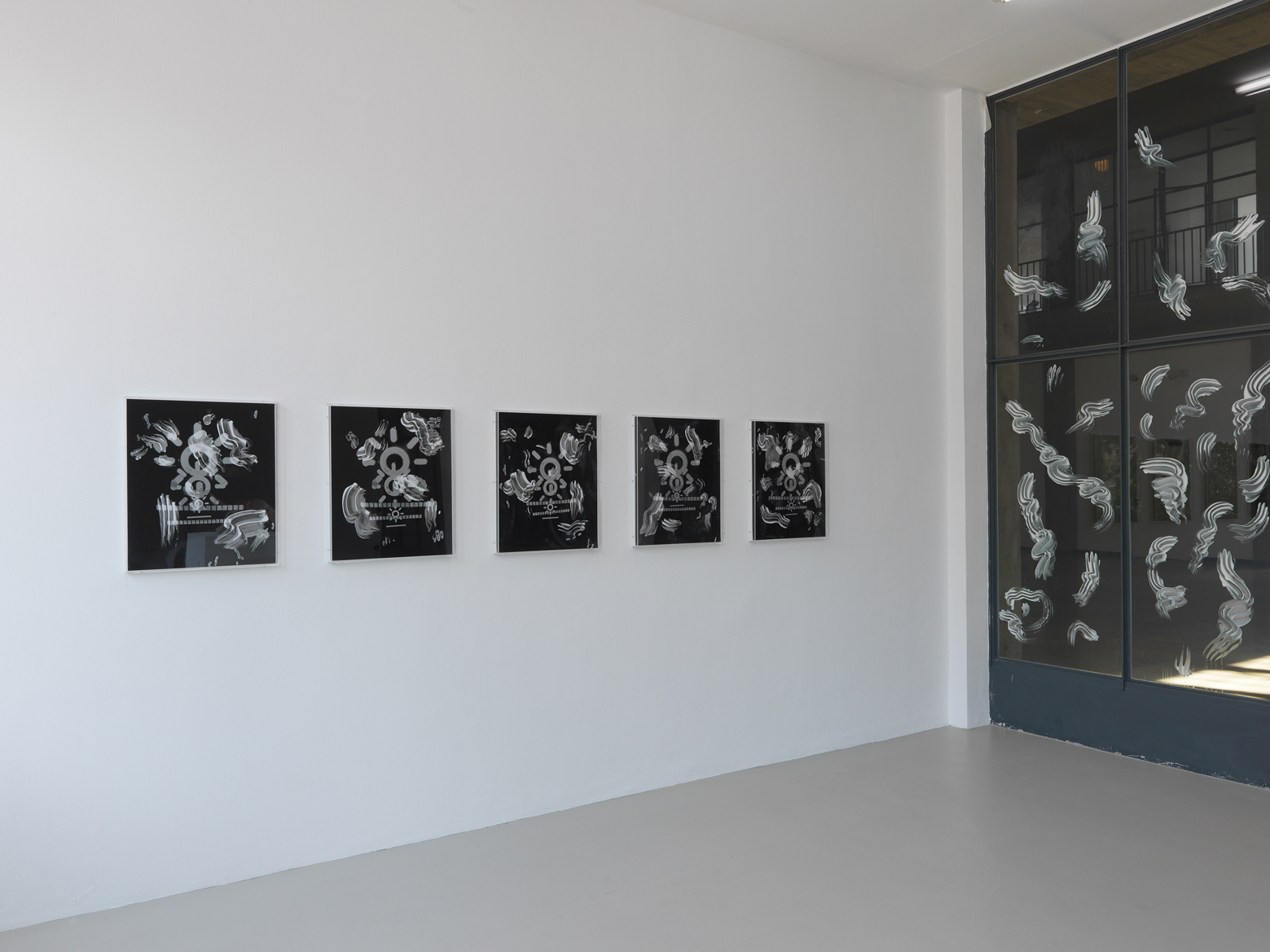
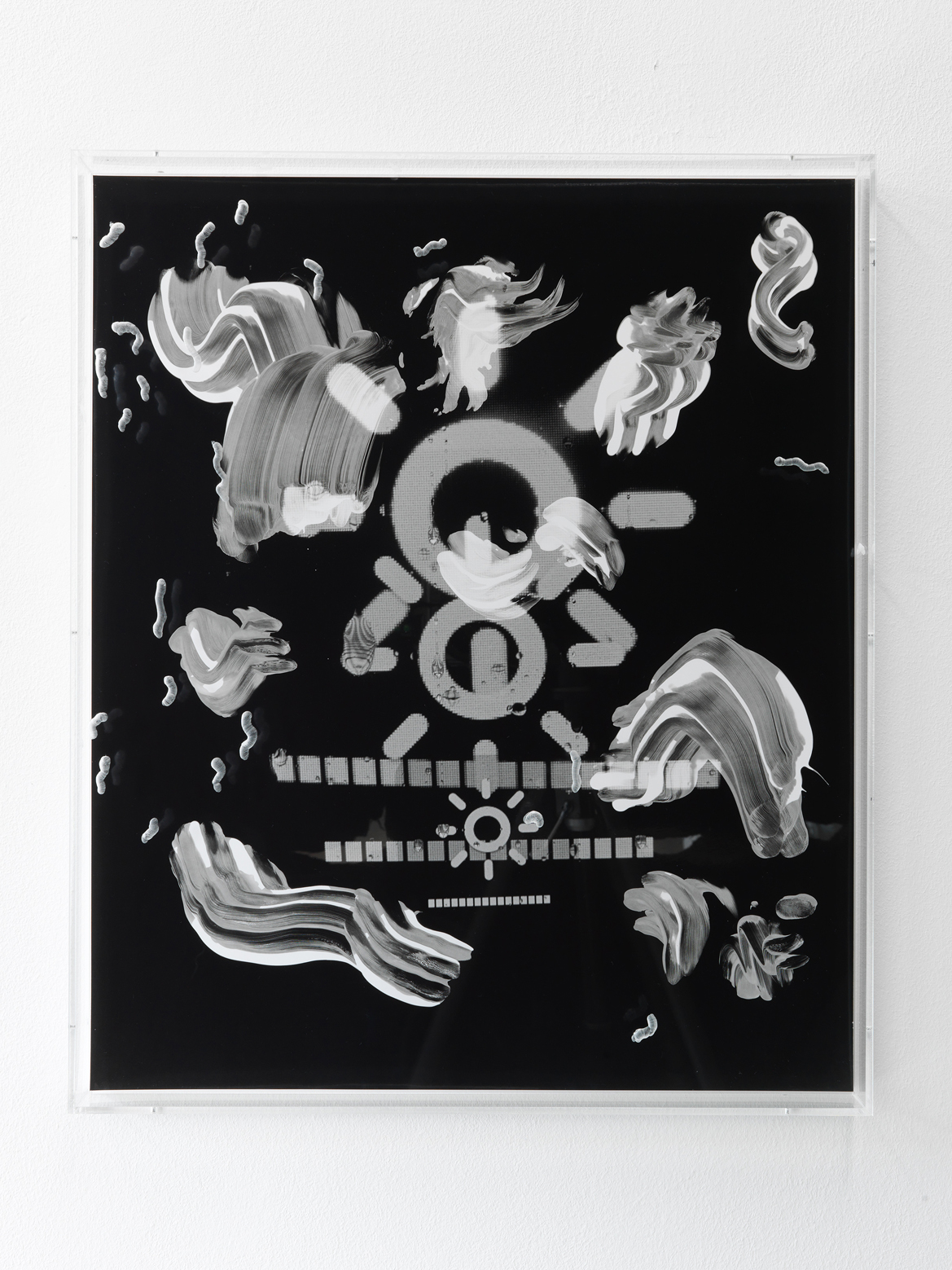
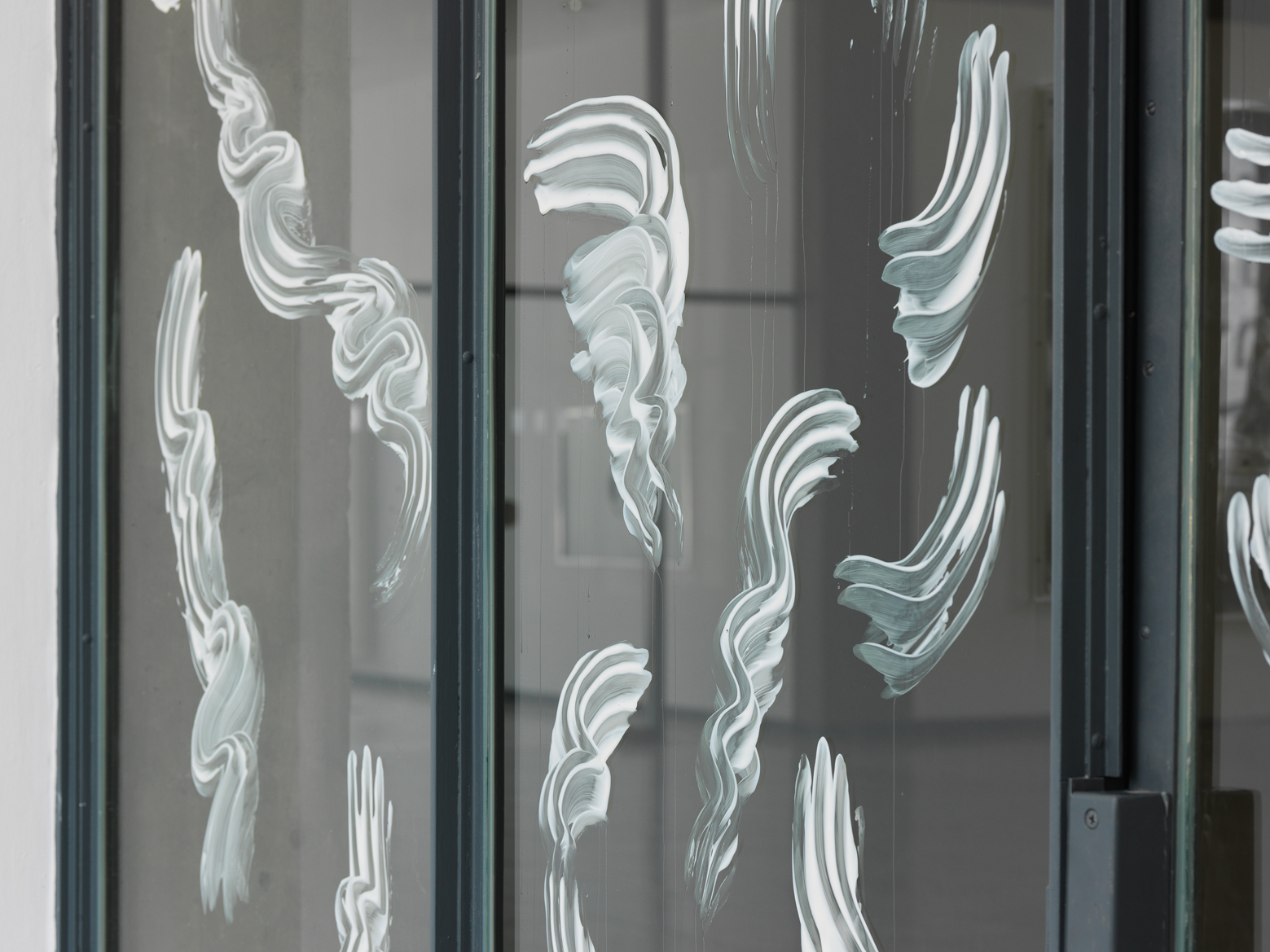
In Donna Haraway’s book on companion species (and ultimately against human exceptionalism) When Species Meet (2008) 1
- http://projectlamar.com/media/ harrawayspecies.pdf
- Ker Than, ”Swimmer’s Sunscreen Killing Off Coral” National Geographic, 29 January, 2008: http://news.nationalgeographic.com/ news/2008/01/080129-sunscreen-coral.html (Accessed 12 October, 2016)
- Donna J. Haraway, ”The Companion Species Manifesto” Prickly Paradigm Press, Chicago. https://nihilsentimentalgia09.files.word press.com/2013/03/haraway_companion _species_manifesto.pdf (Accessed 12 October, 2016)
- Donna J. Haraway, ”Tentacular Thinking: Anthropocene, Capitalocene, Chthulucene” E-Flux Journal Number 75. September 2016. http://www.e-flux.com/journal/75/67125/tentacular-thinking-anthropocene-capitalocene-chthulucene/ (Accessed 14 October, 2016) Haraway favours ”Capitalocene” over ”Anthropocene” because of the clear evidence that the effects of human beings on earth are driven through market capitalism, industry, and the consumer cycle. Whereas ”Anthropocene” denotes that it is caused by humans, Haraway argues that not all societies are contributing in equal measure.
In the exhibition, the symbiosis between humanity and the environment is presented in Mia Goyette’s new series The prospect of an end which delves into the emergence of a new geological era marked by “anthropic rock.” Concrete is the most widely-known example of man-made rocks. Her concrete-cast imaginary buildings resemble ghostly abandoned ruins or fossilised remains of a bygone construction dream. The would-be homes stand like unused multi-story garage buildings connected by voided pipe systems. Goyette casts molds of her own hand in resin and concrete, which are inserted into the structures. The role of the human on these prophetic ruins also casts the trace of the human hand and body in these environmental remains.
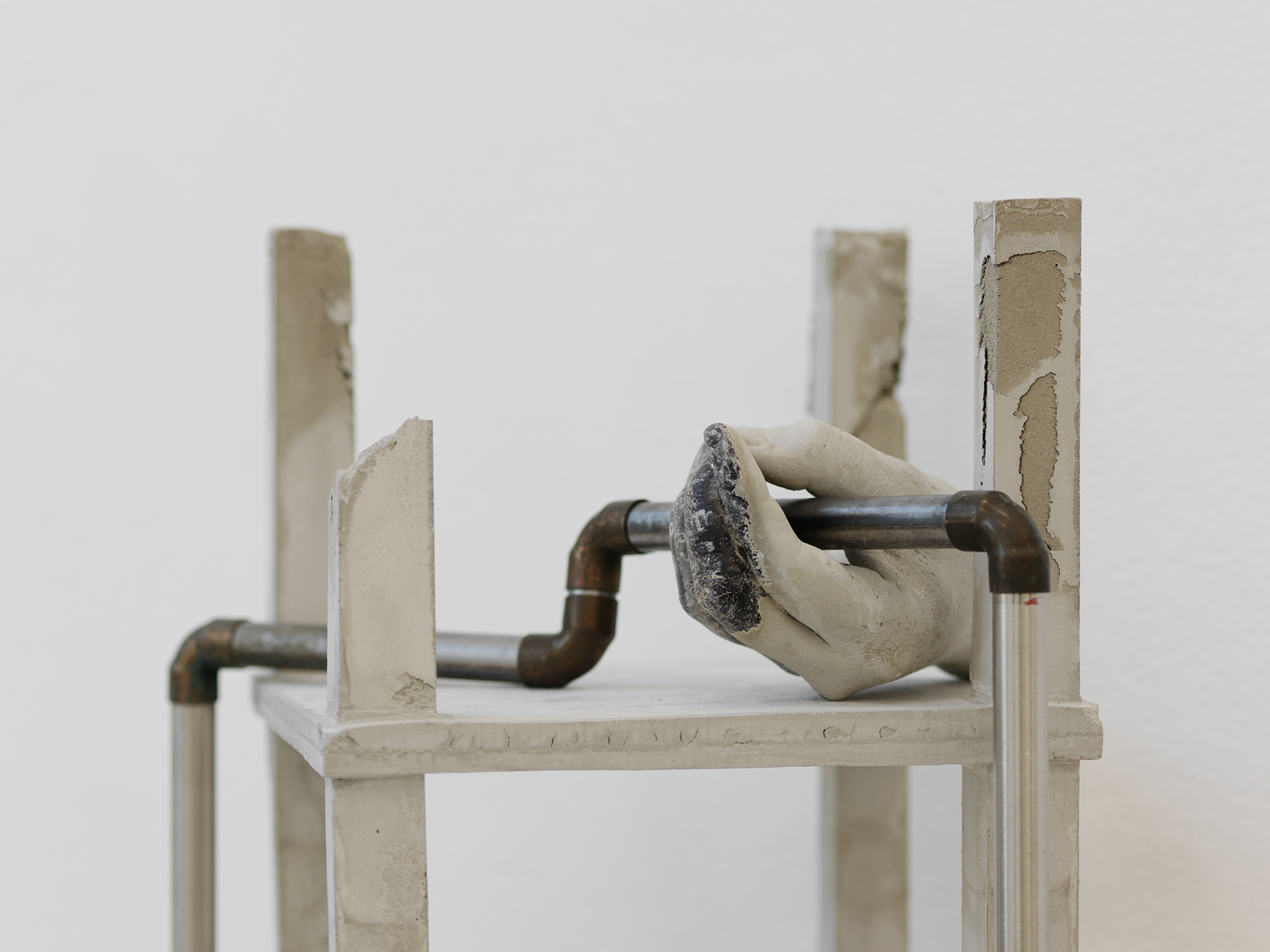
Rachel de Joode approaches the subject of the human-geological relationship through the series Sculpted Human Skin in Rock. The sculptural forms are definitively non-human as they jut out of a rock base in angular directions. The images are close-ups of skin that are collaged into form through multiple digital layers bringing up the concept of contact in a digitally altered flat plane. The image and associations of skin bring instant attempts to anthropomorphize these alien forms but falls flat into a Martian or alien relationship to the body. The technological implications of skin on screen in this foreign universe opens the possibility of what future contact might be, how human existence may evolve around and with technology as we increasingly become linked to it as a means of production. In both Goyette’s environments, based around the dimensions of the individual and the human body, and the technological morphing of human materials in de Joode’s sculptures, echoes of the symbiosis between earthly materials and technological futures resonate with Haraway’s nature-(techno-)culture symbiosis.
One of Haraway’s self-proclaimed heroes, Ursula K. Le Guin, wrote the science-fiction classic The Dispossessed in 1974, as an allusion to the cold war state of relations between the USA and the Soviet Union. The plot follows renowned scientist Shevek from anarcho-communist controlled Urras through a scientific mission to its accelerated capitalist “propertarian” twin Anarres. During his visit to the foreign planet he describes in a series of detailed reflections the strange omnipresence of sensual comfort and eroticism in the objects produced on capitalist Anarres. 1
- “When first aboard the ship, in those long hours of fever and despair, he had been distracted, sometimes pleased and sometimes irritated, by a grossly simple sensation: the softness of the bed. Though only a bunk, its mattress gave under his weight with caressing suppleness. It yielded to him, yielded so insistently that he was, still, always conscious of it while falling asleep. Both the pleasure and the irritation it produced in him were decidedly erotic. There was also the hot-air-nozzle-towel device: the same kind of effect. A tickling. And the design of the furniture in the officers’ lounge, the smooth plastic curves into which stubborn wood and steel had been forced, the smoothness and delicacy of surfaces and textures: were these not also faintly, pervasively erotic?” (pg. 24) Le Guin, Ursula, The Dispossessed: An Ambiguous Utopia, Perfect Bound. 1974. https://libcom.org/files/The%20Dispos sessed%20-%20Ursula%20Le%20Guin.pdf (Accessed 20 October, 2016)
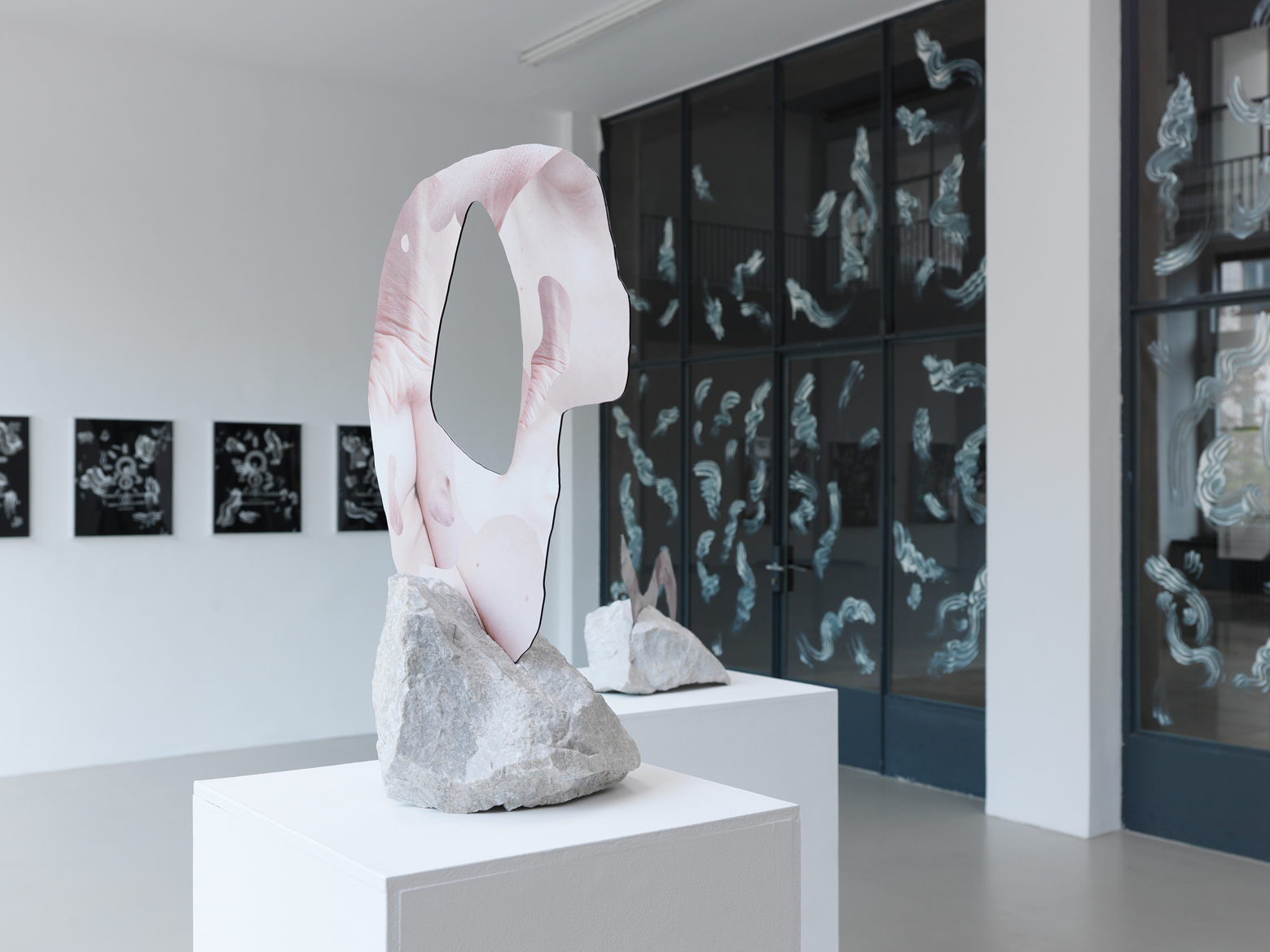
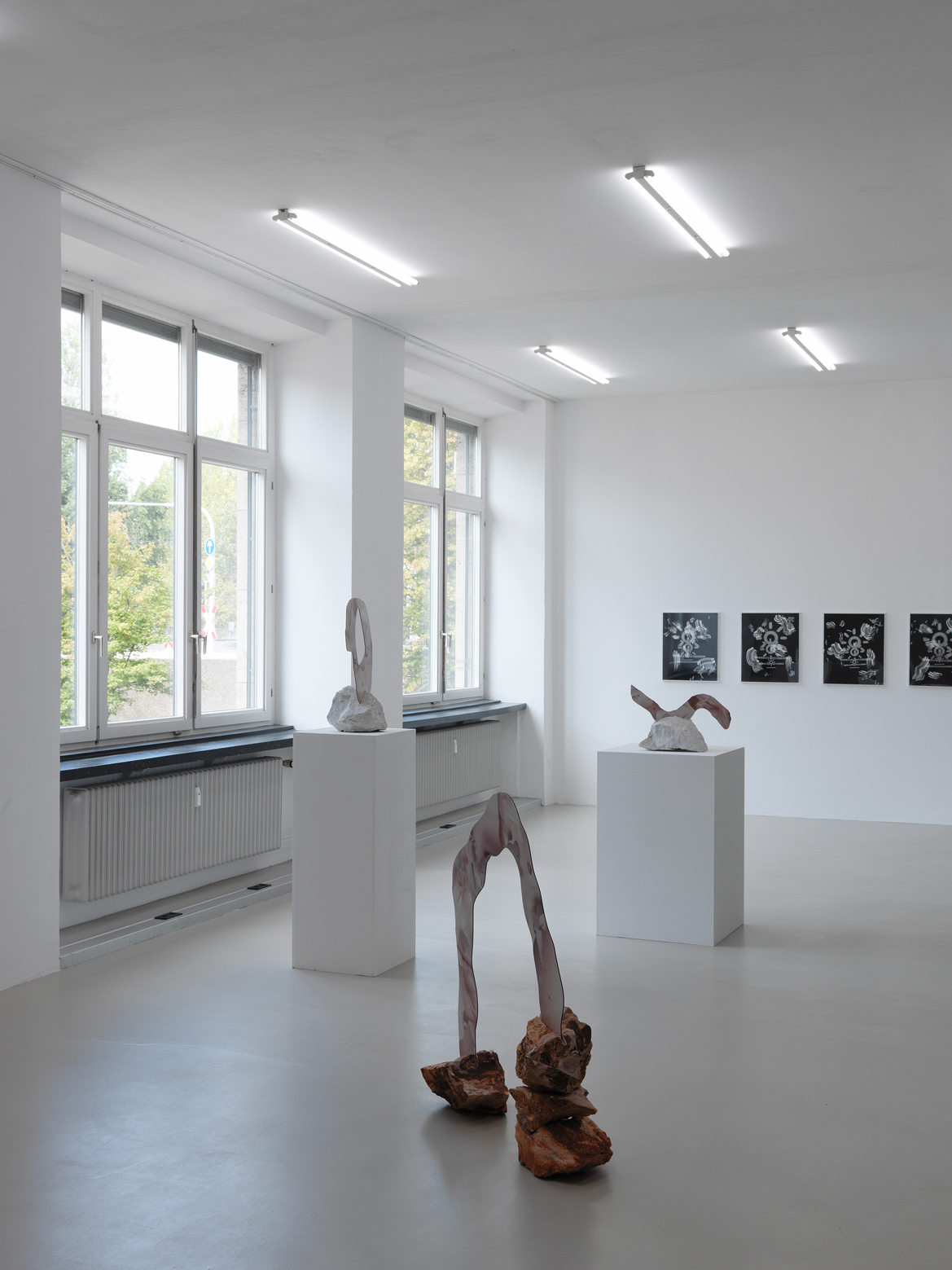
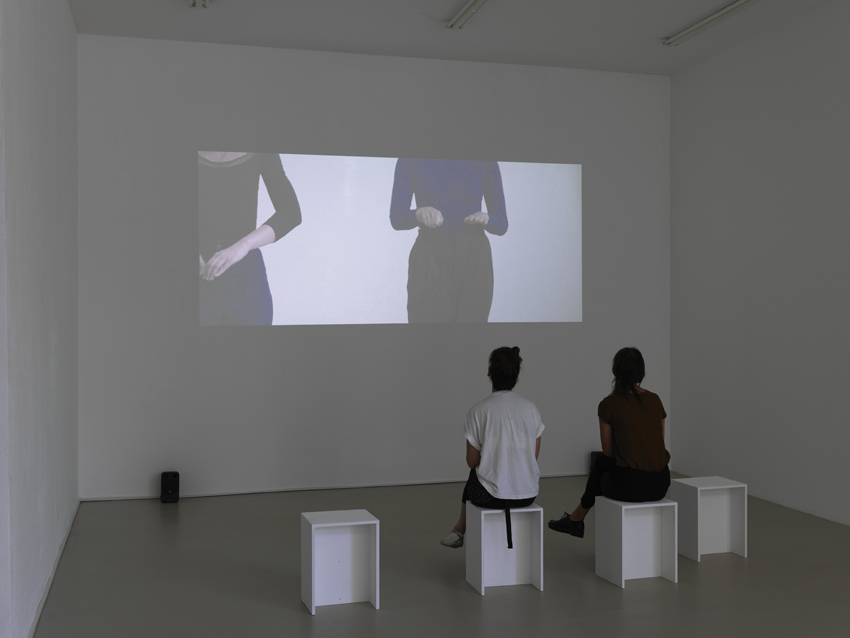
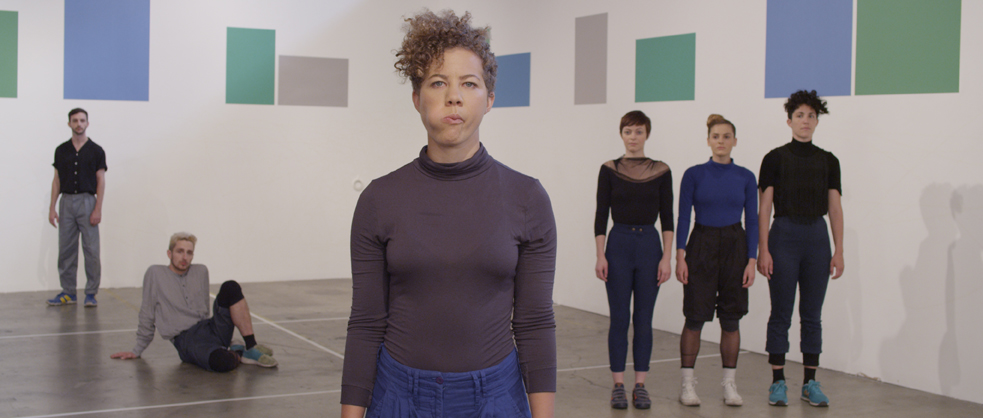
Previeux’s 17-minute film What Shall We Do Next (2014) explores the history of user-interfaces during a period of research at the headquarters of Google and Apple. Dancers present the way that contact between the skin and screen, bodily movements, and mechanical motions have evolved and developed in conjunction with technological innovations. Functional gestural vocabularies are enacted as they are enforced on users of the devices through the history of technology. Physical disorders appear and disappear in response to shifting dictation of repetitive motions. Anecdotes range from early software engineers who developed clunky and uncomfortable movement recognition, to the advance in technology which brings the device back to human nature. There is a notable progression towards the sensual contact of the hand on the touch-screen relating to the accomplishment of a neo-liberal fascination with physical comfort as prophesied by Le Guin. The two techno-giants are also the ones dreaming of utopian liberal off-shore worlds – science-fiction from our recent history becomes reality. The dancers inhabit a clinical white space with painted squares of colour almost as if they lived inside an iPhone app. They follow designed gestures and respond in mechanical motions to commands as a communal entity. The design that fits the body is also shown to have immediate effects on the organization and computation of the human psyche.
The final installation one encounters in the exhibition is Sleight of Hand by Nona Inescu. In conjunction with a series of cast-concrete bowling balls titled Moon Moon Moon, she presents a total gesture of the hand involving produced environments for the fingers on the bowling ball, guiding the hand into a particularly poised grip. Behind them, a partially covered photograph shows the hand in motion beneath an artificial latex skin. A curtain, which only partially reveals the image, implies the hand’s involvement with magic and illusion by its own dexterous ability. The cosmological and astral relationship of the moon-like bowling balls covered in appropriate craters is reinforced by a link to palmistry and astrology in the small sculpture Palmistry. The glove, adapted and designed for the dimensions of the hand, is marked and defined by a cosmic awareness that doubles as an identification of an individual through the idea of the unique fingerprint. The glove sits on a rock base like the works of de Joode and Goyette, repeating the connection between humanity and geology since the definition of “anthropic rock” also extends to stones simply moved by human beings rather than natural forces.
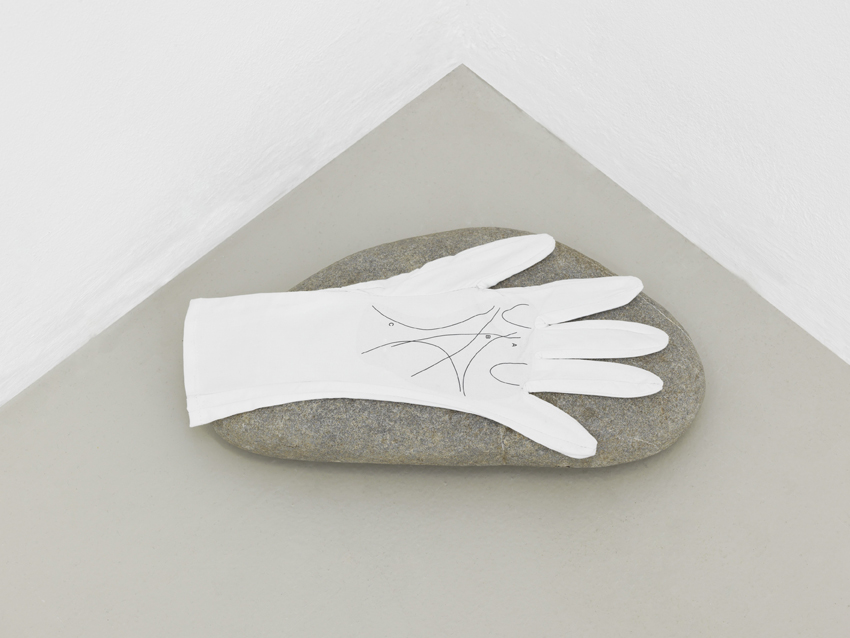
The hand has been used as a symbol to represent the uniqueness and identity of the human species as a tool bearing society of evolutionary importance. Philosopher and anthropologist Bruno Latour, another colleague of Haraway’s in the sphere of ecological theory, also informs her essay “Tentacular Thinking.” In Latour’s “An Attempt at a “Compositionist Manifesto” 1
- “The spirit of the age, if there is such a Zeitgeist, is rather that everything that had been taken for granted in the modernist grand narrative of Progress is fully reversible and that it is impossible to trust in the clear-sightedness of anyone - especially academics.” pg. 473. Bruno Latour, “An Attempt at Writing a “Compositionist Manifesto””, New Literary History, Johns Hopkins University Press, 2010. (pg. 471-490)
- “... this era’s character was precisely not the long-awaited taking into account of nature, but rather the total dissolution of the various notions of nature. In brief, ecology seals the end of nature.” pg. 476 Ibid.
Gestures of Tomorrow implies thoughts and speculations about possible futures, but the artists refer to histories, gestures of today, and gestures of yesterday. While the future is marked by certain legacies of human impact that have already been recorded in geology and environmental studies, the primacy and evolution of biology and chemistry trace back to the past and the flexibility of the present. The historical significance of the hand and its re-emergence as well as the historical evolutionary genetic antecedent to the skin – the (exploding) cell membrane – hold a transtemporal role. The figurative “hand of humanity” (or an atheist-altered concept of the hand of God) can no longer be isolated into a pure state of economic production but rather hold the consequence of the handprint. Similarly, the boundary of the skin, like Latour’s dissolution of the nature-boundary, is both present as the static isolation of the self, but must also be considered as a screen of its own, a heat-presence, a contact-presence, in a total cosmic participation of meaningful impact.
***
Àngels Miralda is a Berlin-based curator and writer, and the director of the gallery House of Egorn. She has recently curated exhibitions at Podium, Oslo; Space Art + Technology, London; and Arebyte, London. She was recently a Ph.D. Candidate in Critical and Historical Studies at the Royal College of Art, London with main research interests in installation and institutional critique.


